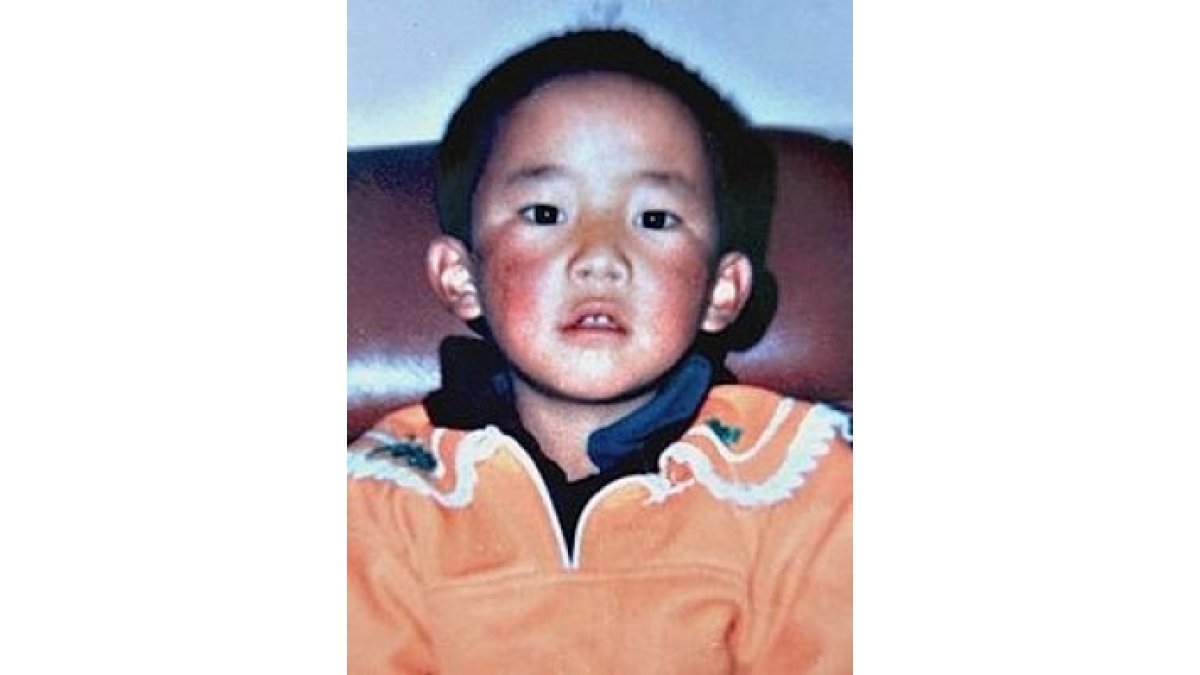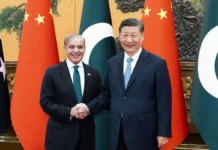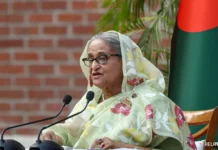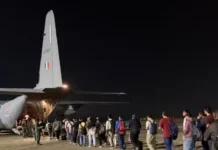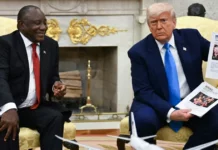Tsering Passang
For the past 26 years, followers of Tibetan Buddhism have been waiting patiently for a glimpse of their spiritual leader, Gedhun Choekyi Nyima, The 11th Panchen Lama of Tibet. This is still yet to materialise.
Born 25th April 1989, Gedhun Choekyi Nyima was recognised as the reincarnation of the 10th Panchen Lama by His Holiness the Dalai Lama as per the Tibetan Buddhist tradition, on 14th May 1995. Within days of his public recognition, on 17th May, the six-year old Gedhun Choekyi Nyima disappeared with his parents and Jadrel Rinpoche, Head of Tashi Lhunpo Monastery in Shigatse, who was in secretly in touch with the Dalai Lama in India regarding the 11th Panchen Lama’s search. Jadrel Rinpoche was appointed as the Head of the Panchen Lama Search Committee, entrusted by the Chinese Government.
Six months later, China announced its own 11th Panchen Lama, Gyaincain Norbu as the reincarnation of the previous 10th Panchen Lama.
For Tibetan Buddhists, the Dalai Lama’s recognised 11th Panchen Lama, Gedhun Choekyi Nyima is the true reincarnation of Tibet’s second highest spiritual leader. Despite repeated requests for access, the whereabouts of the Dalai Lama’s recognised Panchen Lama is not still known to anyone to this day, except to the Chinese authorities. At the time of his disappearance in 1995, Gedhun Choekyi Nyima became the world’s youngest political prisoner.
The mysterious death of the 10th Panchen Lama in 1989 is still a fresh memory to many of his followers. Tibetans suspect foul play by the Chinese authorities over their spiritual leader’s untimely death 32 years ago.
Significance of The Panchen Lama
The successive throne holders of the Panchen Lama lineage have contributed immensely to the temporal and spiritual traditions of Tibet. Tashi Lhunpo Monastery, founded in 1447 by the 1st Dalai Lama, is the traditional monastic seat of the Panchen Lama. It is a historically and culturally important Buddhist monastery based in Shigatse, Tibet’s second-largest city.
The 10th Panchen Lama’s significant contribution to the cause of the Tibetan people both in temporal and spiritual traditions, especially at a time of critical danger of being wiped out by the Chinese Communist regime cannot be discounted easily.
Following the illegal invasion of Tibet by the People’s Republic of China, and with the subsequent escape of the Dalai Lama into exile in India, in March 1959, the Chinese government courted the 10th Panchen Lama and appointed him as Chairman of the Preparatory Committee for the establishments of the Tibet Autonomous Region (TAR). In 1960, Beijing named him Vice-Chairman of the National People’s Congress (NPC) of the People’s Republic of China (PRC) in order that he acts as the spokesperson for Chinese policy in Tibet.
Formally established in 1965, the Tibet Autonomous Region (TAR) became Beijing’s newly-designed political entity aimed at splitting the whole Tibetan Nation into several regions. Other traditional Tibetan regions including Amdo (north-east) and Kham (east) were incorporated into neighbouring Chinese provinces such as Qinghai, Gansu, Yunnan and Sichuan. For Tibetans, Tibet comprises Dotoe (Kham), Domed (Amdo) and Utsang (central) – the three Cholkhas.
The Panchen Lama’s 70,000-character petition
After official tours across various places in Tibet, the 10th Panchen Lama started documenting his findings, started in Shigatse and completed in Beijing. Along with his recommendations, the Panchen Lama submitted the findings to Chinese Premier Zhou Enlai in 1962 – widely known as the 70,000-character petition.
In his official report, the Panchen Lama denounced the draconian policies and actions of the Chinese Communist Party (CCP) in Tibet. He also criticised the Great Leap Forward and a multitude of “inept orders” on the part of the CCP which had caused chronic food shortages.
In Beijing, the Panchen Lama also urged Mao Tsetung to “put an end to the abuses committed against the Tibetan people, to increase their food rations, to provide adequate care for the elderly and the poor, and to respect religious liberty.” Mao listened to him but did nothing to address the matters raised.
According to British journalist Isabel Hilton, the 70,000-character petition remains the “most detailed and informed attack on China’s policies in Tibet that would ever be written.”
For several decades, the Panchen Lama’s petition remained hidden from all but the very highest levels of the Chinese leadership, until one copy surfaced in 1996. In January 1998, to coincide with the 60th anniversary of the birth of the late 10th Panchen Lama, an English translation by Tibet expert Prof. Robert Barnett entitled A Poisoned Arrow: The Secret Report of the 10th Panchen Lama, was published by the London-based Tibet Information Network (TIN), now a defunct news research agency on Tibet.
In 1964, the 10th Panchen Lama was publicly humiliated at Politburo meetings, dismissed from all posts of authority, declared ‘an enemy of the Tibetan people’, and later imprisoned. At the time he was 26 years old. The Tibetan spiritual leader’s situation worsened when the Cultural Revolution started. The Chinese dissident Wei Jingsheng, who was a former Red Guard, published in March 1979 a letter under his name but written by another anonymous author denouncing the conditions at Qincheng Prison, where the 10th Panchen Lama was in captivity. In October 1977 the Panchen Lama was released, but held under house arrest in Beijing until 1982. After his release, the Panchen Lama served as Vice Chairman of the National People’s Congress.
Tseten Wangchuk, a senior Tibetan journalist working for the Voice of America’s (VOA) Tibetan section in the United States, reported that during a 1980 meeting between the Secretary of the Communist Party Hu Yaobang and the Panchen Lama, the latter told Hu “how much he was moved by his reforms, and remarked that had the suggestions of the 70,000-character petition been put in place when they were proposed, the problems in Tibet would not have endured.
The 70,000-character petition was founded on the principle that the specific characteristics of Tibet should be taken into account. This premise was central to the policies of Deng Xiaoping in China during the 1980s and allowed the Panchen Lama to introduce numerous liberalisations into Tibet. However, in early 1992, the CCP removed the concession concerning the “specific characteristics” of Tibet, and current policy monitors religious practices and the monasteries, limits the instruction of Tibetan language, and has since suppressed some of the religious and cultural liberalisations implemented by Hu Yaobang and requested by the Panchen Lama.
In March 1999, during the annual commemoration of Tibetan National Uprising of Lhasa in 1959, the Dalai Lama declared that “the 70,000-character petition published in 1962 by the former Panchen Lama constitutes an eloquent historical document on the policies carried out by the Chinese in Tibet and on the draconian measures put in place there.”
In brief, pushing aside his own personal safety issues, and for the sake of the Tibetan people’s identity, spiritual practice and survival of the unique way of life, the 10th Panchen Lama struggled fearlessly and unrelentingly for their preservation and promotion. He rebuilt Tibet’s religious and cultural heritages and worked hard in the interests of Tibetans, for which he gained high prestige among the Tibetans. His efforts have spread far and wide from Tibet into the Himalayan regions, and through these into the wider world. The previous 10th Panchen Lama has dedicated his whole life to Tibet and Tibetan people.
So, why is China interfering in the religious affairs of Tibetan people?
The “Article 36” of the Constitution of the People’s Republic of China guarantees “Citizens of the People’s Republic of China enjoy freedom of religious belief. No state organ, public organization or individual may compel citizens to believe in, or not to believe in, any religion; nor may they discriminate against citizens who believe in, or do not believe in, any religion.”
In the “Note on the Memorandum of Genuine Autonomy for the TIbetan People”, a follow-up clarification note submitted by the Envoys of His Holiness the Dalai Lama to the Chinese Government after the eighth round of talks in 2008, it states, “The spiritual relationship between master and student and the giving of religious teachings, etc. are essential components of the Dharma practice.
Restricting these is a violation of religious freedom. Similarly, the interference and direct involvement by the state and its institutions in matters of recognition of reincarnated lamas, as provided in the regulation on management of reincarnated lamas adopted by the State on July 18, 2007 is a grave violation of the freedom of religious belief enshrined in the Chinese Constitution.”
The Dalai Lama and Panchen Lama share a warm and friendly relationship and have previously served as mentors and apprentices. They hold the highest decision-making power on the issue of reincarnation, and each had participated in the process of recognising each other’s reincarnation. If one of them passes away, the other has undertaken the responsibility of searching for the reincarnated soul boy of the other and vice-versa.
In his memoir, “Surviving The Dragon: A Tibetan Lama’s Account of 40 Years Under Chinese Rule“, Arjia Rinpoche, former member of the 11th Panchen Lama Search Committee, wrote, “As for the people of Tibet, no matter how politics changed, for them the Dalai Lama and the Panchen Lama remained the sun and the moon. To this day they believe that the reincarnations of both must be mutually recognised to be valid.”
Arjia Rinpoche, Abbott of the renowned Kumbum Monastery in Amdo, north-east Tibet, who had come to the United States via Guatemala as a political exile, wrote in his memoir, “Tibetans clearly wanted the Fourteenth Dalai Lama to be the final arbiter of the identity of the true reincarnation of the Panchen Lama.”
The real intention of the Chinese Government’s appointment of Gyaincain Norbu as the 11th Panchen Lama as opposed to the Dalai Lama’s chosen candidate is crystal clear – a political matter.
After the Chinese government’s official announcement of its 11th Panchen Lama on 29th November 1995, Arjia Rinpoche, who was to become his personal tutor, recalled the remarks made by Ye Xiaowen, Director of the State Administration for Religious Affairs, “When the Dalai Lama announced the name of his chosen candidate, the government immediately sent out charter jets, usually reserved for members of the Politburo, to the birthplaces of the three final candidates in the Naqu district of Tibet. They put the boys and their families on the three jets and whisked them away into hiding.”
On their return to Beijing from Lhasa, in the chartered plane, dumbfounded Arjia Rinpoche recalled Ye Xiaowen stating, “When we made our selection we left nothing to chance. In the silk pouches of the ivory pieces we put a bit of cotton at the bottom of one of them, so it would be a little higher than the others and the right candidate would be chosen”. Gyaincain Norbu’s parents are CCP officials.
In 2019, Gyaincain Norbu was made Head of the China Buddhist Association. The Chinese government will use its chosen Panchen Lama to tour the world and is expected to speak on freedom of religion enjoyed by everyone in China.
During Ye Xiaowen’s directorship at the State Administration for Religions Affair, not only did we see persecutions of Buddhists, Christians, Muslims and Falun Gong followers but he was instrumental in appointing Gyancian Norbu as the 11th Panchen Lama.
Further under Ye’s watch, he declared “State Religious Affairs Bureau Order No. 5” that attempted to reduce the influence of the 14th Dalai Lama and other foreign groups on the reincarnations in Tibet.
Chinese government over the years has made concerted efforts to bring down the image of the Dalai Lama by labelling him as “separatist”. The CCP has also banned the photos of the Dalai Lama and possessing his photos is considered as an act of crime.
At the heart of all these things is the issue of reincarnation of the Dalai Lama. For years the Chinese government has been grooming its own Panchen Lama. It is most likely that he will play an instrumental role in deciding the reincarnation of the next Dalai Lama in China. This is expected to lead to two Dalai Lamas in the future if the current Dalai Lama decides to keep the tradition of reincarnation of the Dalai Lama continues.
The fact of the matter is that the issue of reincarnation of the Dalai Lama is not limited to China and the Dalai Lama but it now has larger geopolitical consideration with security implications in the Himalayan regions.
The US has shown its full support for Tibet on the reincarnation issue i.e. whatever the Tibetan people decide to choose. It has, in late 2020, passed the Tibet Policy and Support Act (TPSA) and it sends a strong message to China that the US stands steadfast with the Dalai Lama and the Central Tibetan Administration (aka Tibetan Government-in-exile) on the issue of Tibetan reincarnation.
Home to millions of Buddhists, especially Tibetan Buddhism, the great nation of India too can play a supporting role to His Holiness the Dalai Lama as well as to the Central Tibetan Administration towards the continuity of the Dalai Lama’s reincarnation system as per the Tibetan tradition.
(Tsering Passang is the Founder & Convener, Global Alliance for Tibet & Persecuted Minorities)
